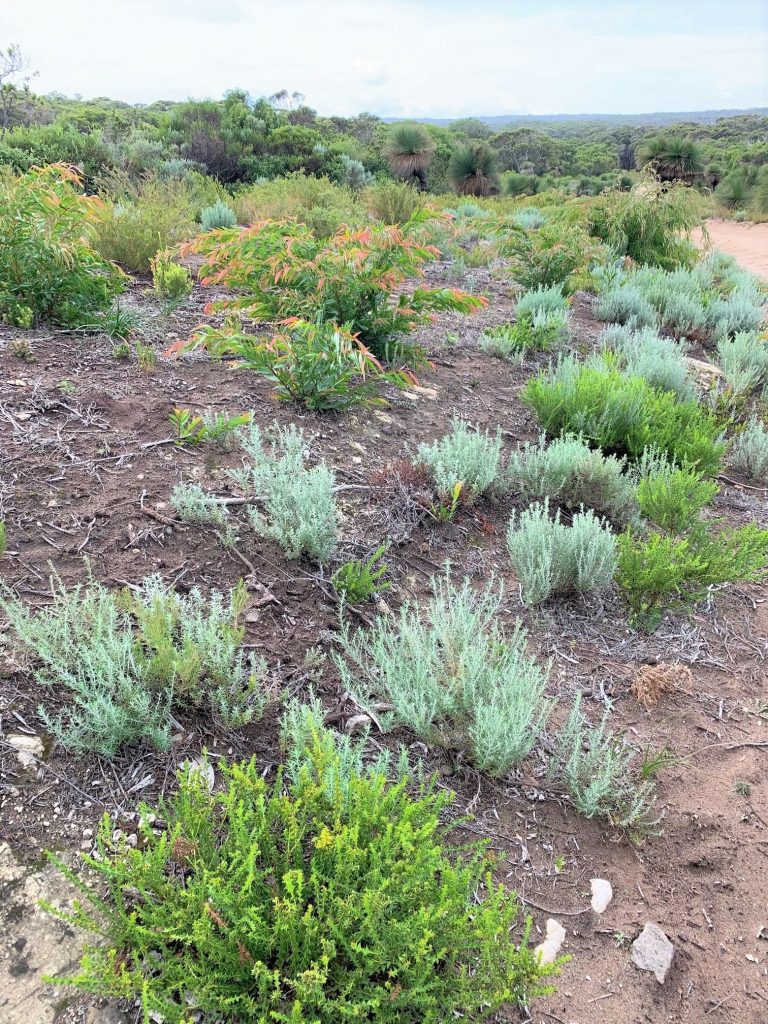It can be really difficult working out which plants to put together to create an aesthetically pleasing native garden, but the main thing is to get started and fine-tune later. I’ve tried to outline some design ideas below though that can help you get started.
Walking recently on the Cape-Cape recently, I took a photo that is likely revegetation in progress, but helps to demonstrate some of the design concepts that we strive to achieve at APACE Natural Design:
 Design Tips:
Design Tips:
- Firstly, the foreground has a mix of textures and colours – grey and green shrubs, of about the same size. Note that for native plants, it is the contrast in texture and plant colour that matters more than the flower colour (which may only occur for a few months of the year).
- Another thing to note, is that in the background are larger shrubs and trees. In landscaping, we usually plant the smaller things in front of the larger things to fill a space (groundcovers and shrubs less than 1m in height) with larger shrubs behind. In a small garden, there is sometimes only room for one shrub layer to screen a fence, but if you’re in the process of deciding on the width of a garden bed, make it a minimum 2m width if you can – as two layers of shrubs will look better and also survive better with less water as they create a cooler environment against a fence.
- In nature, you often see trees with low groundcovers underneath – which helps the trunk of the tree to become part of the feature – this can look really effective on a verge.
- Using a mix of local, native plants, means they will flourish and complement each other. From a biodiversity perspective, it also assists to bring in the insects that naturally feed off these plants – which then supports birds and other larger wildlife as well.

- This second photo above shows how shrubs and tufted species can work together. The grassy Xanthorrea sits in amongst the other shrubs and others are dotted around the landscape as well. There is also repetition of plants in this photo – with grey Olearia axillaris. Repetition of species creates uniformity of design and makes it a calmer more pleasant scene, compared to using too many different species (though eventually you can continue to incorporate a lot of species as your garden becomes established).
- Planting tufted species in groups such as Dianella revoluta, Pattersonia occidentalis or Conostylis candicans, either under a tree or beyond an initial strong shrub border reflects how these plants occur in nature and can look really effective.
- Have fun with the layout – and don’t be scared! Gardens are meant to change with time and the main thing is to get started – once you have an area devoted to native plants, you’ll be able to add and remove over time to make the garden more diverse and interesting as you learn what does well.
Written by Michelle Donnelly, Landscape Designer/Environmental Engineer

